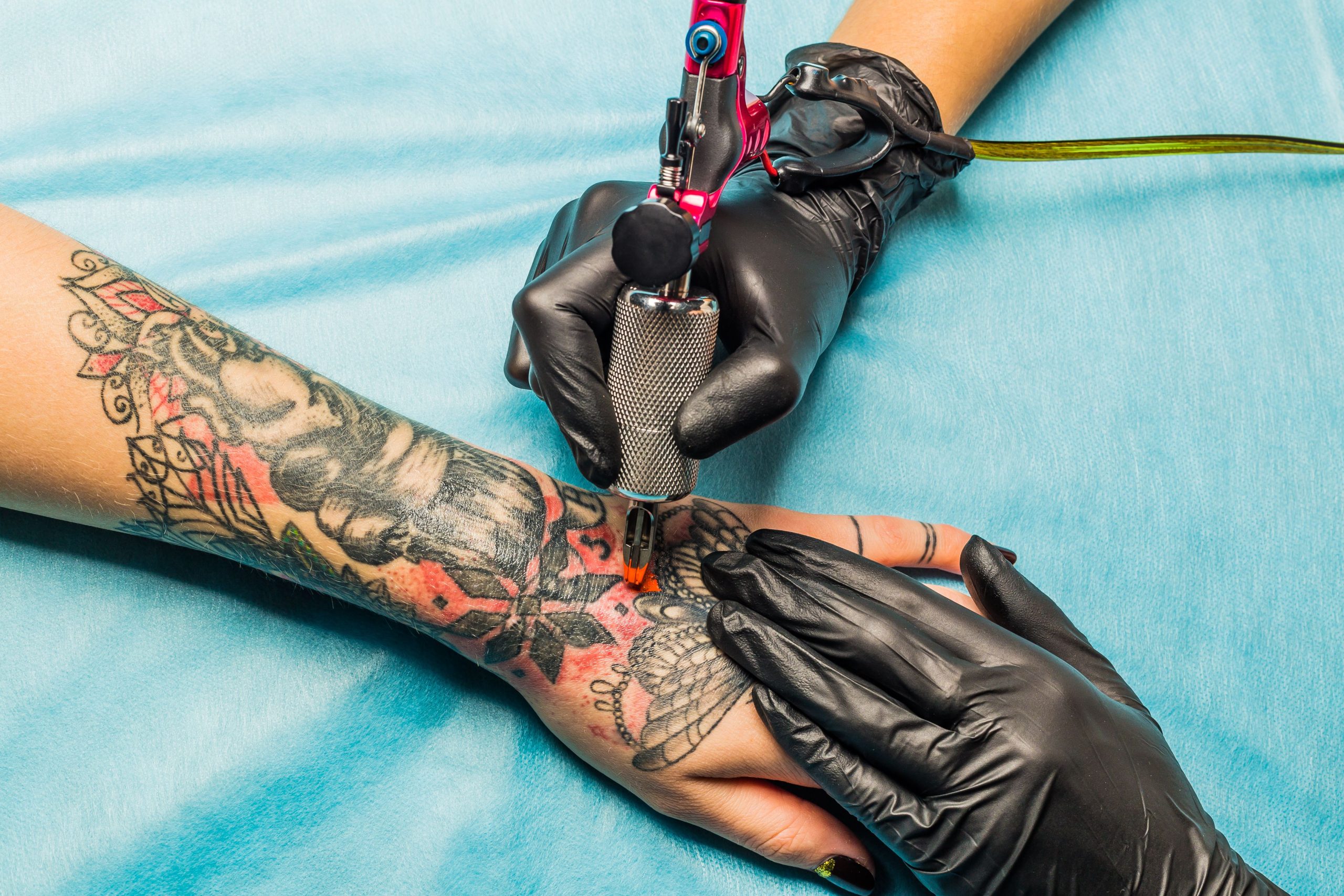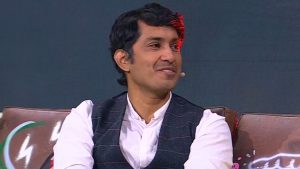
Where Do Tattoos Hurt the Most? Tattoo Artists Weigh In
All products featured on Glamour are independently selected by our editors. However, we may receive compensation from retailers and/or from purchases of products through these links.
Whether you’re getting your first tattoo or your 10th, there’s one question likely on your mind: Where do tattoos hurt the most? It’s a fair question to wonder about beforehand, especially as you’re choosing where you want to get your new ink.
“Generally, the areas of the body that tend to hurt the most are those with thin skin, many nerve endings, or close proximity to bone,” says Anastasia Summer, tattoo artist and owner of Nice Tattoo Parlor in Brooklyn. If you’re worried about tattoo pain in sensitive areas, consider avoiding these kinds of locations on your body to make for a more comfortable experience.
First-timers may also want to consider starting with smaller tattoos to get comfortable with the feeling. “In my experience, small tattoos are easy and very manageable,” says Brian Keith Thompson, owner of tattoo and piercing studio Body Electric in Los Angeles. “By the time they get annoyingly painful, they’re over.”
But remember that pain and how much it’s going to hurt is subjective, so everyone’s journey will be different. “Don’t get tattooed where you think it’s going to hurt less, but instead get it where you really want it,” says Thompson. “The pain won’t last that long and you will have the tattoo for a long time, so—with that in mind—choose well.”
Ahead, Summer and Thompson share the areas where tattoos usually hurt the most, so you know exactly what to expect before your appointment. Plus, read on for some areas that tend to hurt the least and how to prepare for your tattoo appointment.
43 Flower-Tattoo Ideas You’ll Want Forever
Gallery43 Slides
By Sarah Y. Wu and Michella Oré
Where do tattoos hurt the most?According to the pros, here are the locations you might feel more discomfort:
Rib Cage
“This is often cited as one of the most painful areas,” says Summer. “The skin is very thin, and it’s right over the ribs, so you can really feel the vibration and pressure directly on the bone.”
Head, Face, Neck, and Fingers
“These areas have a high concentration of nerve endings, and the skin can be quite thin, leading to more intense sensations,” says Summer. Thompson, who’s had his head and hands (specifically his palm) tattooed, notes that these spots were painful for him too.
Spine
“Similar to the rib cage, tattooing directly over the spine means the needles are very close to the bone, which can be quite jarring,” says Summer. Thompson agrees and has the personal experience to back it up: “For me, my back was the most painful place for me,” he says.
Inner Thigh and Groin Area
“This area is very sensitive due to a lot of nerve endings and generally softer, more delicate skin,” says Summer.
The Coolest Small Tattoos Spotted on Celebrities
Gallery58 Slides
By Whitney Perry
Where do tattoos hurt the least?What about locations that won’t hurt? “Areas with more muscle or fat, and fewer nerve endings, tend to be less painful,” says Summer. If you’re concerned about pain, these could be good places to start.
Outer Thigh
“This area usually has a good amount of muscle and fat, providing a comfortable cushion for the tattooing process,” says Summer.
Outer Bicep and Shoulder
“Similar to the outer thigh, these areas have more muscle and less direct contact with bone, making them relatively easy to get tattooed,” says Summer.
Outer Forearm
“While the inner forearm can be more sensitive, the outer forearm often has thicker skin and less direct bone contact, making it a more comfortable spot for many,” says Summer. If you want an arm tattoo but haven’t decided exactly where, consider the pain level. Thompson says his clients have also shared that upper arms and forearms tend to hurt the least.
Calves
“The fleshy part of the calf muscle can be a good spot for a first tattoo, as it’s typically less painful than areas with thin skin,” says Summer.
46 Small Tattoos Even the Most Needle-Shy Can’t Resist
Gallery46 Slides
By Deanna Pai
How to prepare for a tattoo appointmentRegardless of where on your body you’ve decided to get tatted, preparation is key for a smooth experience. “For anyone getting their first tattoo, my biggest advice is to be prepared and listen to your artist,” says Summer.
Here are Summer’s tips and tricks for a successful tattoo experience.
Before your appointment:
In the days leading up to your appointment, stay hydrated internally and externally by drinking plenty of water and moisturizing. “Healthy, hydrated skin takes ink better and generally feels better during the process,” Summer says. “Start moisturizing the skin where you plan to get tattooed a few days in advance.”
Nivea Intense Healing Body Lotion for Dry Skin
Vaseline Intensive Care Sensitive Skin Relief Body Lotion
You’ll also want to avoid alcohol and blood thinners, as they “can thin your blood and make you bleed more, which can affect the tattoo process and healing,” she says. “Avoid for at least 24 hours before your appointment.”
The night before, get a good night’s sleep. “Being well-rested makes a huge difference in your pain tolerance and overall experience,” Summer says.
The day of your appointment:
On the day of your appointment, make sure to eat a solid meal. “Don’t come in on an empty stomach,” Summer says. “Having stable blood sugar levels helps prevent lightheadedness and keeps your energy up.” She also recommends coming in comfortable, loose-fitting clothing that allows easy access to the area you want tattooed.
When it’s time to head to the appointment, Thompson says that he tries to center his mind and remember that, though it might hurt, it’ll all be worth it in the end. “Definitely have something to read if your tattoo artist doesn’t like to chitchat,” he says. “Distraction is key to getting though it.” Summer also recommends headphones for music or a podcast. Keeping your mind off the sensation, especially in longer sessions, will help.
As you begin the tattoo process, don’t be afraid to communicate with your artist. “If you need a break, feel lightheaded, or are experiencing intense pain, let your artist know,” says Summer. “We’re here to make you as comfortable as possible.”
After your appointment:
Post-appointment, trust the process. “Your artist has years of experience. Listen to their aftercare instructions carefully; proper aftercare is crucial for a beautiful, long-lasting tattoo,” says Summer.
Catharine Malzahn is the contributing associate beauty editor at Glamour.











